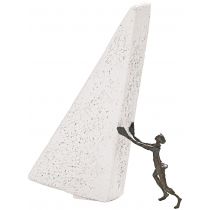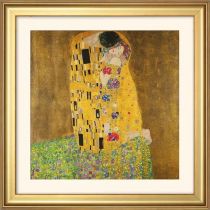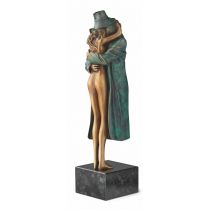Cart is empty
Monet was probably the most dedicated to open-air painting of all French Impressionists. A gifted colorist, he loved to work in the country, trying to capture in his landscapes the eternal play of light and shadow, constantly changing, lasting only for one short moment and then, gone forever...
His famous “Poppies”, painted in 1873 in Argenteuil, picture a luminous poppy field and in the foreground, on the bottom right, his wife Camille. She walks graciously, with her son Jean by her side, looking like a wild flower that suddenly sprung amongst the poppies… Monet masterfully gives us the impression of movement, by repeating the two figures twice on his canvas.
Today you have the unique opportunity to acquire this masterpiece of the Orsay collection in an excellent copy. The edition is strictly limited so ensure yours right now!
Claude Monet's art is the epitome of Impressionism. During his long life as a painter, he was tirelessly looking for ways to depict the variability of light and colors in many atmospheric variations and at different times of the day.
Born in Paris, he grew up on the Normandy coast in Le Havre, where his father ran a small grocery store. Monet made his first artistic attempts in the field of caricature, but then turned to open-air painting. Light pastel tones found their way onto his canvases. His pictures were repeatedly rejected by the official Paris Salon, but Monet and his friends Auguste Renoir and Alfred Sisley were not discouraged. On their joint exits to Fontainebleau, they created wonderful fresh pictures in the great outdoors, which always left the strict academic rules behind.
However, severe financial crises soon hit Monet and his pregnant lover Camille. During the Franco-German war, Monet fled to London with the young family. After the war they settled in Argenteuil. This small town outside of Paris, picturesquely situated on the Seine, then became the center of attraction for a whole range of impressionist painters: Edouard Manet, Gustave Caillebotte, but also Camille Pissarro, Auguste Renoir and Alfred Sisley met there for their fresh impressions Banish canvas. In a first independent exhibition of the group, a picture by Monet "Impression. Sunrise" helps the art movement to its names.
After Camille's death, Monet moved to Giverny with his second wife Alice. Here he was able to realize the lifelong dream of his own garden, which he had designed himself: The blossoming garden with its Japanese bridges and ponds full of water lilies inspired Monet to produce ever new, ever larger pictures that show the changing flora as an overwhelming decorative harmony of nature.
The estate - bequeathed to the Academié des Beaux Art by Monet's son in 1966 and the "Claude Monet Foundation" since 1980 - was an inexhaustible source of inspiration for him. Today, the garden in Giverny is the target of numerous art lovers, and those who visit it feel immediately immersed in the artist's world of images. In spring everything is in colorful bloom, and in view of the real water lily ponds that Monet has painted over and over again, it is astonishing how exactly he captured the scenery with all his own artistic will. "I work continuously and with love in my garden, I need flowers most of all, always, always. My heart is always in Giverny. A separation from Giverny would hit me hard ... I would never find such a beautiful place again," was Monet's firm conviction . He never had to separate again
Monet was described as the inventor of colored dreams beyond the visible. But he was much more, he always tried to realize his idea of painting under the open sky - en plein air. It was always decisive for his painting how he saw, not what he saw.An impressionist masterpiec
The Impressionist style that emerged in French painting around 1870 owes its name to the landscape of Claude Monet's 'Impression, soleil levant'. After the initial rejection, she started a real triumphal march.
Painters such as Claude Monet, Edgar Degas, Edouard Manet, Auguste Renoir and others created motifs from everyday life, city and landscape scenes in a bright, natural light.Impressionism is to be seen as a reaction to the painting of the academies: the emphasis was not on emphasizing the content with an image structure designed according to fixed rules, but on the subject as it appears in the respective moment, in an often random section, was the focus . Reality was seen in all its variety of colors in natural lighting. Open-air painting took the place of studio painting.
With the lightening of the palette and the dissolution of fixed contours, a new way of dealing with color went hand in hand. In many cases, the colors were no longer mixed on the palette, but placed side by side on the canvas in such a way that the final impression only emerged in the eye of the beholder, at a certain distance. In "pointillism" (with painters like Georges Seurat or Paul Signac) this principle was then taken to the extreme.
Outside France, Impressionism was taken up in the works of painters such as Max Slevogt, Max Liebermann or Lovis Corinth in Germany or by James AM Whistler in the USA. Impressionism expressed itself only to a limited extent in sculpture. In the works of Auguste Rodin, who is considered one of the main representatives, there is a dissolution of the surfaces, in which the play of light and shadow is included in the artistic statement. Degas and Renoir also created sculptures











